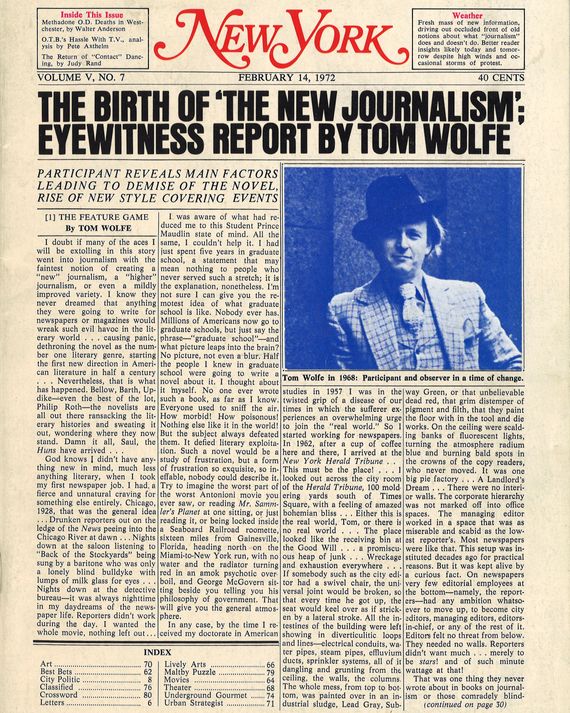The 6-Minute Rule for News Articles
The 6-Minute Rule for News Articles
Blog Article
The Greatest Guide To News Articles
Table of ContentsThe 5-Minute Rule for News ArticlesThe smart Trick of News Articles That Nobody is DiscussingThe News Articles StatementsRumored Buzz on News ArticlesNews Articles for Dummies
Good expertise of different topics gives trainees an one-upmanship over their peers. Even though digital and social media are easily available, we need to not neglect how essential it is to review the newspapers. Moms and dads have to attempt and inculcate the routine of reading a newspaper as a daily regimen to proceed the legacy of the revered print tool.Information stories likewise consist of at the very least one of the following important attributes loved one to the intended audience: proximity, prestige, timeliness, human passion, curiosity, or effect.
Within these restrictions, information tales likewise intend to be comprehensive. Amongst the larger and much more revered newspapers, fairness and balance is a significant variable in providing info.
Newspapers with a global audience, for instance, have a tendency to use an extra formal style of creating. News Articles.; usual style overviews include the and the United States News Style Publication.
The 3-Minute Rule for News Articles
As a rule, journalists will certainly not make use of a lengthy word when a short one will do. They make use of subject-verb-object construction and vibrant, active prose (see Grammar). They use anecdotes, examples and metaphors, and they seldom depend upon generalizations or abstract ideas. News authors try to avoid using the same word much more than when in a paragraph (often called an "echo" or "word mirror").
Nevertheless, headlines in some cases omit the subject (e.g., "Jumps From Boat, Catches in Wheel") or verb (e.g., "Cat woman fortunate"). A subhead (also subhed, sub-headline, subheading, subtitle, deck or dek) can be either a subordinate title under the main heading, or the heading of a subsection of the write-up. It is a heading that comes before the primary message, or a group of paragraphs of the main message.

of a write-up subject, informant, or interviewee), it is described as a drawn quotation or draw quote. Additional signboards of any one of these types might show up later on in the short article (especially on succeeding pages) to tempt more reading. Journalistic websites often use computer animation strategies to swap one signboard for another (e.g.
News Articles - Truths
Such billboards are additionally used as reminders to the article in various other areas of the magazine or site, or as ads for the item in other magazine or sites. Press release of the Swiss government. Typical structure with title, lead this page paragraph (summary in vibrant), various other paragraphs (information) and call details.

Example of a hard-lead paragraph NASA is suggesting one more room job. The spending plan demands approximately $10 billion for the project.
An "off-lead" is the second most important front page Visit Website news of the day. To "bury the lead" is to begin the short article with history details or details of second relevance to the readers, forcing them to read even more deeply right into a short article than they must have to in order to uncover the necessary points.
News Articles for Dummies
Typical use is that or two sentences each create their very own paragraph. Journalists typically describe the organization or framework of an information story as an inverted pyramid. The essential and most fascinating components of a tale are placed at the beginning, with supporting details adhering to in order of decreasing importance.
It permits individuals to discover a subject to only the depth that their interest takes them, and without the charge of details or subtleties that they might consider irrelevant, yet still making that details available to a lot more interested viewers. The upside down pyramid framework additionally enables posts to be trimmed to any arbitrary size throughout layout, to fit in the space offered.
Some authors begin their stories with the "1-2-3 lead", yet there are numerous kinds of lead available. A kicker can refer to numerous points: The last story in the news program; a "pleased" tale to finish the program.
Longer short articles, such as publication cover posts and the pieces that lead the within sections of a paper, are called. Attribute tales vary from straight news in numerous means. Foremost is the lack of a straight-news lead, the majority of the moment. As opposed to using the significance of a story up front, function writers may try to entice viewers in.
News Articles - The Facts
The reporter typically details communications with interview topics, making the piece much more individual. A function's initial paragraphs usually associate an intriguing moment or occasion, as in an "unscientific lead". From the particulars of a person or episode, its sight quickly expands to generalities concerning the story's subject. The section that signifies what an attribute has to do with is called the or signboard.

The Editor's Toolbox: A Recommendation Overview for Beginners and Professionals (2001) Allan M. Siegal and William G. Connolly. The New York Times Manual of Style and Use: The Authorities Style Overview Used by the Writers and Editors of the Globe's The majority of Reliable Newspaper (2002) M. L. Stein, Susan Paterno, and R.
Report this page